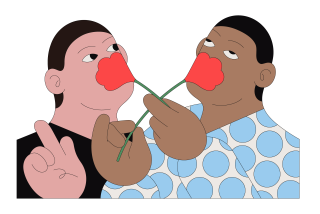Your Nose Is a Microbe Luxury Resort
- Share via
In my darkest hours, I can comfort myself with the fact that I am not alone. In fact, I am positively infested. For starters, I’ve caught some flu-like thing, so I am shedding off virus particles in a Pig-Pen-like cloud.
But even at the best of times I am teeming, I learn from an article in New Scientist magazine (https://www.newscientist.com) titled “How many different species live on or in the average human body, and what is the total population of these guests?” Except for my bladder and my lungs, it appears, I am covered with life on my outside and those parts of my inside that are open to my outside. The total microscopic population, if packed tight, would fill something like a coffee mug chock-full o’ microbes.
And, just as with the deep ocean, there are new discoveries being made all the time! Why, just last year, researchers at the Mayo Clinic in Rochester published a veritable field report on fungal life in the human nose.
You wouldn’t believe what’s in there. Fungi that make bread go moldy. Fungi used in cheese-making. Molds that make penicillin (which you’d think might be handy should our noses be invaded by bad bacteria). And all kinds of molds known as “black molds,” which live pretty much everywhere and whose spores are constantly flying around getting in everything, including our nasal passages.
Scientists in Graz, Austria, have made similar findings, and even grew a tiny mushroom from spores from someone’s nose. (This conjures up delightful--but sadly implausible--images of people with bracket fungi jutting from their faces.)
Healthy people as well as chronic sinusitis sufferers harbor these fungi, say Dr. David A. Sherris and Dr. Jens Ponikau, both of the Mayo team. “They don’t do anything--they don’t harm you, and you can’t avoid them unless you stop breathing, which is obviously not a desirable option,” says Ponikau.
But for reasons unknown, some people’s immune systems react badly to black molds, say the Mayo scientists. The resulting inflammation of nose and sinus membranes could be a major cause of chronic sinusitis, the scientists believe.
And that might lead to new kinds of treatment. At “The Nose 2000 . . . and Beyond,” an international meeting of nose experts that was going on while you were watching the Olympics, the Mayo team reports that local application of an anti-fungal drug might bring relief to many with chronic sinusitis. If this pans out in properly controlled studies now underway, sufferers wouldn’t have to rely anymore on steroids with undesirable side effects. Which would be nothing--ha, ha--to sniff at.
Disposable Diapers Become a Hot Issue
There’s been a lot of discussion in recent years about declining sperm counts and increased male infertility over the last few decades. No one knows quite what’s going on, but some have pointed fingers at “environmental estrogens”: industrial chemicals that may interfere with proper male development, as witnessed by occasional reports of boy seabirds going girly and nesting on eggs and so forth.
Now another possible culprit has been unearthed: disposable diapers. It’s the baby-size version of another famous clothing theory--that tight underwear is harmful to one’s sperm count because it raises the temperature around the scrotum. (Sperm and testicles need a slightly cooler temperature to develop properly: That’s why the testicles hang vulnerably outside the body.)
In a study reported in the journal Archives of Disease in Childhood, researchers used tiny thermal probes to track the temperatures near 48 healthy babies’ scrotums when they were wearing either reusable cotton diapers or plastic-lined, disposable ones. The study found that temperatures were significantly higher--as much as 1 degree centigrade above body temperature--when the disposable diapers were worn.
Oh, good. Another thing our kids can blame us for when they grow up.
*
If you have an idea for a topic, write or e-mail Rosie Mestel at L.A. Times, 202 W. 1st St., LA, CA 90012, rosie.mestel@latimes.com.
More to Read
Sign up for The Wild
We’ll help you find the best places to hike, bike and run, as well as the perfect silent spots for meditation and yoga.
You may occasionally receive promotional content from the Los Angeles Times.





